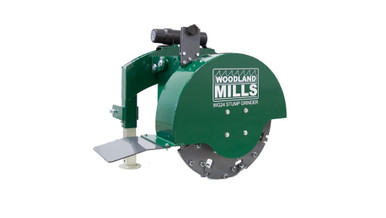Get a stick of electric conduit. Make a series of holes about 2" apart starting at one end. Crimp that end closed, and then bend into a J hook. Drop the hook around the stump. It should be fairly close to the stump with the holes pointed down. All the holes should be around the hook, and not all the way up the shaft. Rig a hair dryer with the heating elements removed or other type of blower to the other end. Use tape, cardboard, or whatever to blow into the tube. It doesn't have to blow hard, but it has to blow for a while. A hairdryer with no heating element draws a miniscule amount of current, so you can use a really long drop cord.
Establish a small fire around the stump and on top of the hook. Use logs, split in half, to completely close in the stump. You can make this several layers deep, and you can use the green wood. Once the small fire is well established, turn the blower on. The stump in the middle will burn white hot. The logs on the outside will trap the heat. The tube will supply the air to make the fire burn from the middle out. An 8" root will take a couple hours to burn to beneath the ground.



